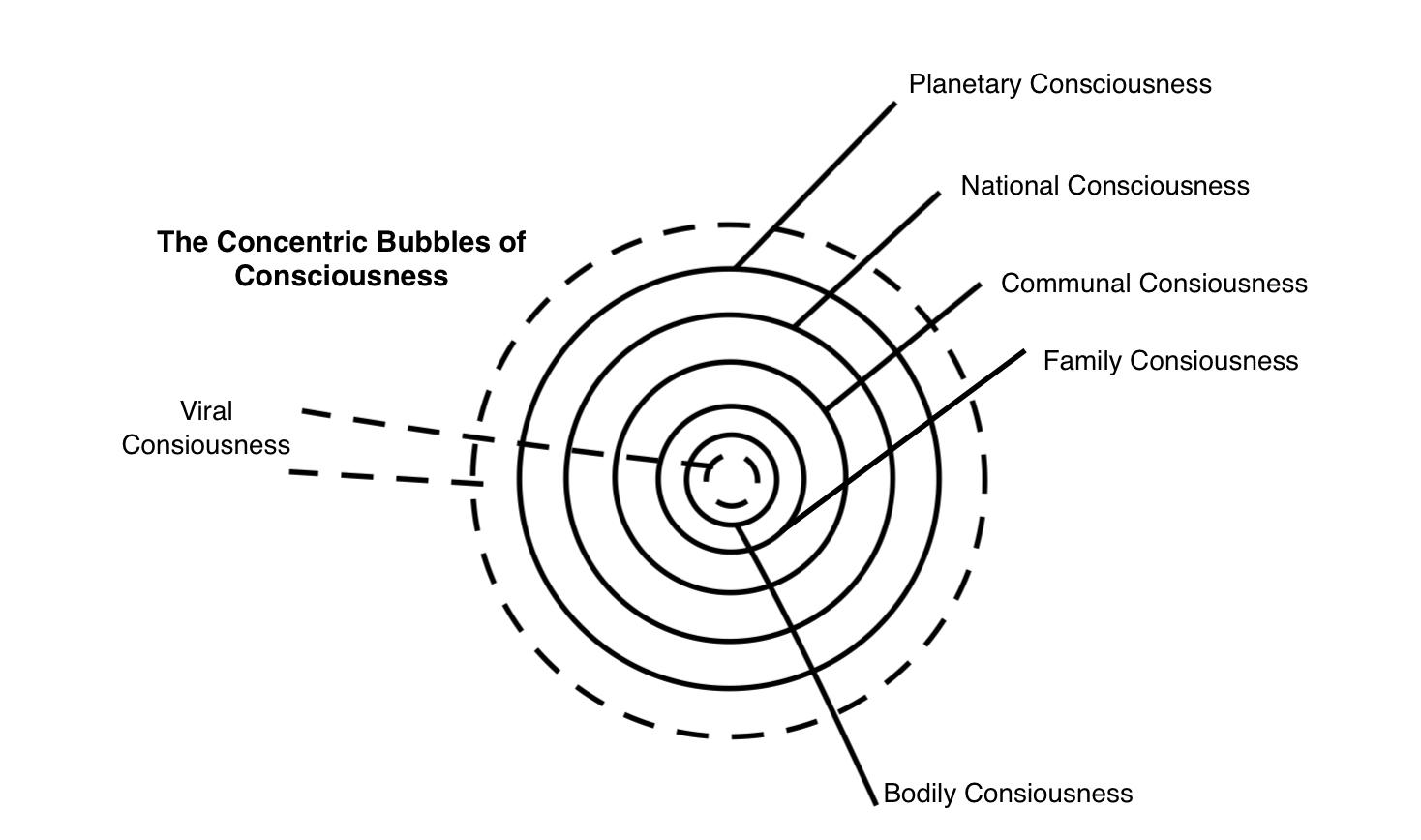
Waseda University

Space facilitates the disjuncture of the multiple levels of consciousness, which are threaded through and entangled with one another. The daily dose of bedroom meditation might give awareness to our bodies; Christmas dining tables could remind us of familial bonds or their shackles; and, in theatre events, we become more attuned to the communal consciousness either in traditional auditoriums or in pop-up theatres in aircraft hangars, parking lots, and city streets. When situated in a specific space, any one of the onto-epistemological circles of consciousness is activated, highlighted, reiterated, and brought to the fore.
After 7 April 2020, however, when the emergency stay-at-home order was declared by the Japanese government, the taxonomies of space, which in turn gave space to different modes of consciousness, were flattened to a single unit of quarantine “spacetimemattering” (Barad 146). Unlike those countries in lockdown with relatively ample space, for many Tokyoites the decree to stay in their tiny pod-like studios obliged the foreclosure of public life: a colleague confessed it is nearly impossible to Zoom conference, as his wife will also be conferencing in the room and both alternately lulling a baby.
Despite using roughly 20 % of the country’s economy to the rescue spending, the money was squandered in the worst possible way starting with spending 46.6 billion yen ($424 million) to deliver two cotton masks per family, which, to begin with, the fabric failed to filter viruses, and, worse still, 6 % of them were tainted with, bugs, hairs and bloods. Now, the government is misspending more money to check the quality of the masks, which can be easily bought in convenient stores. And, so, even amid the corona crisis, most were forced to perform economically and maintain their occupational personas, despite being confined inside a tiny room, which ultimately failed and aggravated their anxieties. Physically, and gradually mentally, the pandemic compelled the most extroverted people to become a hikikomori (socially withdrawn people), that is, absorbed in the bubble of home inertia, which was augmented in the chamber of consciousness that compressed multiple spatial layers. And, sooner or later, when trapped in a psycho-autopoietic loop, the self-referents began dominating all external references, as it is the case, more often than not, that “the endogenous holds sway over the exogenous” (Virilio 144).
One of the reasons why theatres performances using Zoom and the like have failed to fully achieve our “attention economy” is because they do not dramaturgically consider that, amidst the space-time suspension of COVID-19, the endogenous/exogenous, public/private, familial/planetary, and any other affective stages are suppressively superimposed over the tiny proscenium of the black-screen (Davenport and Beck 2). Still more crucially, one should note that the digital pandemic theatres are not only mounted on the effects of biological fright, but also encircled by the “digital feelings” of hypertrophied cosmic fear (Felton-Dansky and Gallagher-Ross 1).
That is, first, the performance is pulled by the strong centripetal threat of COVID-19, which could be activated at any time inside the bodies of the audience, and second, the artwork is surrounded by the equally strong centrifugal force of the online #COVID-19, the “info-virus” that convulses the entire “planetary body [and] stops the machine” (Berardi).
As Sarah Bay-Cheng says, if theatre is indeed not “a privileged site of temporary encounter” between living bodies but instead “yet another form of mediated interaction,” in the time of corona it is crucial to develop a spatiotemporal and atmospheric dramaturgy that is customized for our informatively hyper-stimulated, emotionally overindulged, and inevitably hypochondriac time (Bay-Cheng 33). As of now, all the world’s a stage haunted by the effective virus and affective #virus. The virus is spatially within and among us.
Barad, Karen. “Nature’s Queer Performativity.” Qui Parle, vol. 19, no. 2, pp. 121-58.
Bay-Cheng, Sarah. “Theatre is Media: Some Principles for a Digital Historiography of Performance.” Theater, vol. 42, no. 2, pp. 27-41.
Berardi, Franco “Bifo.” “Diary of Psycho-Deflation.” Verso, 18 March 2020. https://versobooks.com/blogs/4600-bifo-diary-of-the-psycho-deflation. Accessed 16 June 2020.
Davenport, Thomas H., and John C. Beck. The Attention Economy: Understanding the New Currency of Business. Harvard Business School Press, 2001.
Felton-Dansky, Miriam, and Jacob Gallagher-Ross. “Up Front.” Theater, vol. 46, no. 2, pp. 1-5.